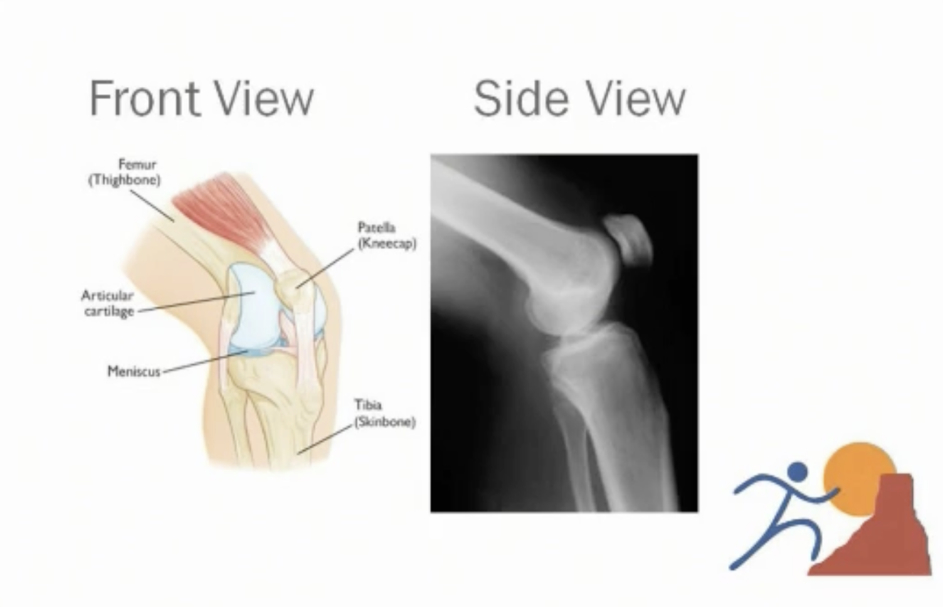Osgood-Schlatter
July 14, 2022
Hello, and welcome to Yuma Health and Happenings. I’m Dr. Ron Clark, Orthopedic Surgeon and founder of The Bone and Joint Center of Yuma. Today, I want to talk about the knee with its amazing form and functions. We’ll also discuss what happens when the knee gets overused in growing youngsters.
The Anatomy of the Knee
The knee is formed where the thigh bone— the femur—and a lower leg bone—the tibia—connect. The knee joint can be compared to a rocking chair, moving back and forth to allow for bending and straightening. This joint consists of bone and is covered by a softer tissue known as cartilage, which cushions and lubricates the bones during movement. Between the two major bones of the knee is the kneecap, or patella, which connects the front muscles of the thigh to the front of the shin bone.
Kneecap Pain in Young Children
Pain can often develop around the shin bone just beneath the kneecap. This pain can be constant, usually low intensity, and does not seem to be associated with a specific injury or fall. The pain may be caused by an overload of force where the growing shin bone and the kneecap meet.
Most of the individuals who have this type of pain are girls between the ages of 9–11 and boys between the ages of 10–12. This age corresponds with the time of final knee growth.
Evaluating Kneecap Pain
Because this pain can have several different causes, each patient will be carefully assessed with both a physical examination and X-rays. Although exceedingly rare, there are bone tumors that can grow in young people, so the possibility of having one must be considered. The kneecap receives a lot of force from walking, running, and stair climbing. Sometimes, even while still, the knee continues to ache.
During the evaluation, the patient will need to answer questions related to sports participation, stair use, and pain frequency. Since pain medicines, like ibuprofen or naproxen, can be used without a prescription, the use and effect of these are also considered. In analyzing the nature of the discomfort, the doctor will want to ensure they don’t miss any conditions that have a known cause and treatment.
When all other sources of knee pain or problems have been considered, the term “chronic anterior knee pain” is used. This term simply refers to the fact that there is an ongoing pain in the front of the knee. Symptoms of chronic anterior knee pain include pain with kneeling, sports, or jumping, as well as pain that worsens throughout the day.
Osgood-Schlatter’s Disease
When the source of this pain is the attachment of the kneecap tendon to the shin bone, the problem is called Osgood-Schlatter’s disease. This condition is caused by the over-stressing of the attachment of the kneecap ligament (patellar tendon) to the shin bone.
Osgood-Schlatter’s does not occur suddenly; rather, it’s the effect of overload for weeks and months. As a result, the bone is pulled upwards by the patellar tendon, and a bump develops at the shin bone where the patellar tendon attaches. Sometimes, the bone will even invade portions of the patellar tendon. There is likely some hereditary element to this condition, as it commonly runs in families.
Treatment of Osgood-Schlatter’s Disease
Treatment for Osgood-Schlatter’s usually involves decreasing the intensity of the patient’s activities, as this condition frequently occurs in those who are participating in youth sports, such as soccer or basketball. This does not mean that all activities should be stopped, but an adjustment should be made to decrease the length of time regularly spent playing the sport. As this condition typically affects those kids who are most active and motivated to excel in their sport, decreased activity levels are not always a welcomed recommendation.
Individuals are, however, glad to know that the condition will always resolve with time, as the symptoms will go away completely as soon as the shin bone stops growing. The bump on the shin bone will be permanent and will not go away in the future. Once the individual stops growing, there will be no further enlargement of the bump, and the bump will not have any long-lasting effect on knee function in the future.
Application of cold packs, use of anti-inflammatory medications, and stretching after workouts are also helpful. For those not participating in team sports, a careful assessment of the frequency and duration of workouts should be evaluated and adjusted to decrease symptoms. The education of patients, parents, and coaches is important, as each will need to keep an eye on the Osgood-Schlatter’s disease and be involved in making changes in the child’s schedule to decrease the intensity of the symptoms.